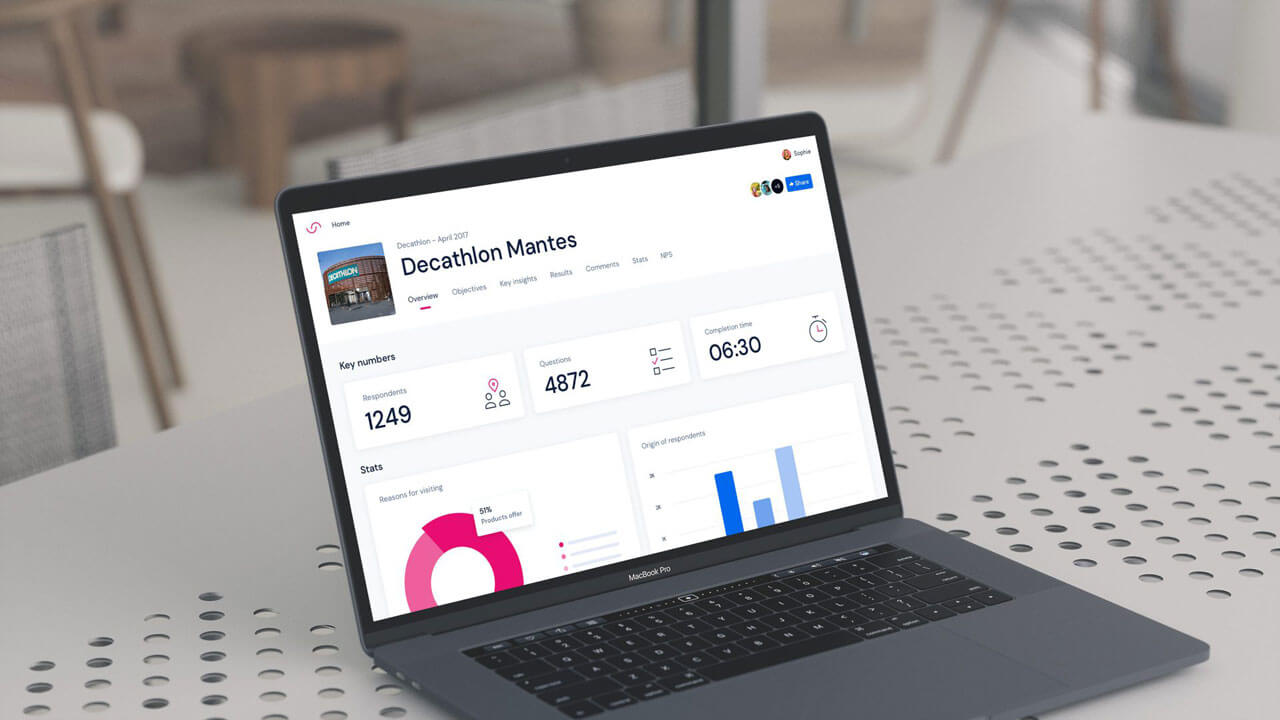How Customer Experience Research Pays Off
How Customer Experience Research Pays Off
Laraib Shahzad
In the business environment, there is a huge gap between the experiences that customers want and whatever organizations are giving them.
Over 67% of customers cite bad experience as the reason for turnover, though only 1 out of 26 unhappy customers complain. However, according to Esteban Kolsky, if a customer isn’t satisfied, 13% of them will let 15 other people know that they’re unhappy. Even one bad customer experience could be devastating, as 51% of customers may never do business with a company again. What’s worse, it is 5 to 25 times more expensive to get a new customer than to keep a current one.
Therefore, it’s essential that we do our best to keep our customers happy without any hint of negative feedback. Failing to bridge that gap could be costly. So, before you realize which areas you need to improve upon, you have to commit yourself to vigorous customer research to get a better idea of customer experience, as well as the factors that are vital to customer satisfaction metrics.
If you are to fully engage with your customers, you have to understand every stage of the customer journey. From the time they find a product to the moment they become long-time loyal customers, there are different types of research that organizations can perform at each stage of the customer lifecycle to grasp what their customers experience.
Creating Awareness
Every new company needs to come up with a way to make their business stand out to their customers, in terms of being different and compelling. This is where website optimization and competitive research get factored in.
Website feedback is crucial in helping you know what prospective customers think of your website, whether they can find the information they need, or if there are items missing. You can interview a random set of your online visitors to understand them better or come up with other helpful methods of interaction.
Competitive benchmarking is another strategy that gives you a better understanding of your brand’s strengths and weaknesses, as well as those of your competitors. Survey both your own customers and those of your top competitors to determine your advantages.
Brand Preferences
Finding out what factors give your brand preference over your competitor’s brand is essential for maximizing consideration. One way to do this is to perform a competitive analysis of the Wallet Allocation Rule. This gives you insight into the brands your customers prefer and why. First, ask your customers what they think of your brand, and to rank it with other brands of the same category. Then follow up with them using questions to get more information.
You could also perform a post-transaction survey. This helps you understand your mistakes and also boosts the chances of your target audience picking your company over others. This type of survey can be done through live chat, navigation research, tracking the Shopping Cart Abandonment Rate, or through in-person interactions.
How Your Customers Make Decisions
Customers' decisions are very important. Even if they don’t go as planned, they provide you with plenty of ways to improve and increase your opportunities to capture potential customers.
To understand their decision process, you can perform a Win/Loss Analysis. This is an in-depth analysis of the reasons why you won or lost a customer. Ask a bunch of questions to your potential customers about their purchasing decisions, such as price expectations, their experience with your staff, product features, and other factors.
Another good way to get a glimpse of your customer’s decision process is to gather customer feedback. This is crucial for your business, as it enables you to learn about the overall experience of your customers. You can ask the prospective customer how they found out about you, what impacted their decisions, what additional information may have influenced their decisions, and then, finally, why they did or didn’t choose your brand.
Another good practice is to collect online purchase feedback. This procedure can provide more insight into the user-friendly aspect of your website as well as the overall experience of your customers. Once again, you can ask them questions about the process and whether it was hard or easy. Ask if they were able to find the products without a hassle and be open to suggestions for improvements.
Finally, you can also collect on-site purchase feedback. While more costly, it can be very efficient, because in-person interactions are essential in finding out what attracts your clients or drives them away from your physical store. You can provide questions to both current and prospective customers about what they think of the store organization, cleanliness, staff friendliness, product selection and more.
Making Good Use Of Customer Experience Research
Another relevant and crucial piece of business is knowing how your customers interact with your products. This will provide you with insights into new opportunities to attract new customers and also retain existing ones. This way, you will have the necessary ingredients for maximizing your profits.
First, you can collect feedback at events. This will allow you to capture the essence of your customers’ experiences and ensure that your events align with their needs and objectives. You would also want to ask about feedback for content, sessions, logistics, and overall impressions.
Note that you should know whether your project succeeded or failed. Implementation is important. You can also collect feedback after status meetings, post-training, following major milestones, etc. You should also know how customer satisfaction rates differ between products and services so that you get a better idea about what you need to do to become more customer-centric. Then, get feedback on your customer’s satisfaction with each individual product.
Make Sure Your Clients Are Happy After Resolving Their Issues
In order to protect and even enhance your brand, it’s important to learn about and bounce back from bad experiences. You can acquire this data during the product support phase. There are two metrics all businesses should track: the customer effort score and the Transactional NPS.
The first one, the customer effort score, is an industry benchmark that measures how much effort a customer puts into getting their issue resolved. You can ask them questions like “How much do you agree with the following statement: The company made it easier for me to resolve my issue.”
The second one, transactional NPS (Net Promoter Score), enables you to measure customer loyalty. Be sure to give your customers an NPS survey right after every support interaction, and at the end of other major customer touchpoints such as post-implementation sign-off.
A Few Growth Metrics
During the growth stage, you should focus on retaining and upselling your products and services to your existing customer base, and creating a loyalty program.
There are three tools that can translate customer experience research into sales growth.
The first one, relational NPS, lets you know how your business is doing as a whole, and whether your customers have a good or bad view of it. Ask customers follow-up questions once they have provided a rating to find out what they feel is good and bad within your organization.
The second is your customer loyalty program. It’s not enough to simply have one. You should also be conducting loyalty research, in order to measure the effectiveness of your loyalty rewards program. Ask your customers questions such as “How was your overall experience with our loyalty rewards program?”
The third one is the customer satisfaction score. This metric measures how much a customer is satisfied with your product or service. Ask this question, “How would you rate your overall satisfaction with the product/service and your experience with it?”
Customer Insights And Growth
Putting the needs of the customer before everything else is key. From attracting customers to your products and services to retaining your present and best customers long-term while increasing your customer value–being customer-centric is what pushes sales.
Customer research is what provides you with valuable insights into your customer-centricity, and it’s also how you gain long-term brand loyalty. A great customer experience program seals the loop at scale, and tracks your entire organization’s performance.



